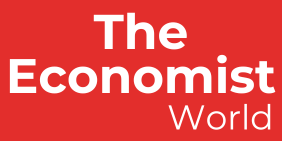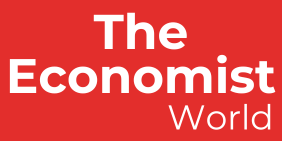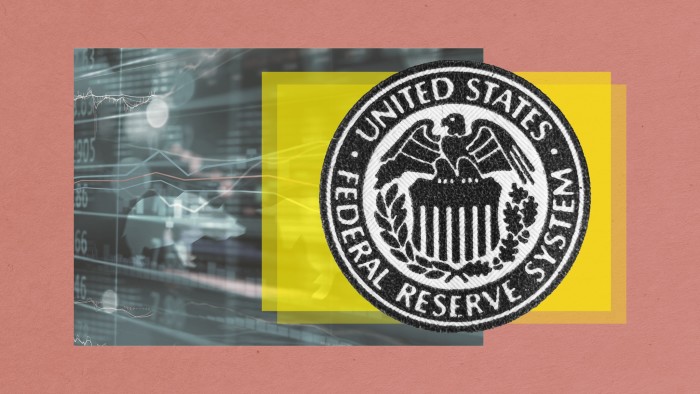This article is an on-site version of our Chris Giles on Central Banks newsletter. Premium subscribers can sign up here to get the newsletter delivered every Tuesday. Standard subscribers can upgrade to Premium here, or explore all FT newsletters
Federal Reserve chair Jay Powell was asked last Wednesday whether he had the best job in the US government. The question stems from an interview Donald Trump gave before the 2024 election, in which he said that being Fed chair was so wonderful because “you show up to the office once a month and you say, ‘let’s say flip a coin’ and everybody talks about you like you’re a god”.
Powell has been asked this many times before. His stock answer, which he repeated (50 mins, 10 seconds), is that it is the best job in government, he works hard, is surrounded by wonderful staff and does not feel much like a god because he is “blessed with a large number of amply compensated critics”.
Backlash
The interview was jovial. The audience loved it and treated him a bit like a god, giving a huge ovation to his pledge (55 mins, 10 seconds) that the Fed would “do what we do, strictly without consideration of political or any other extraneous factors”.
One person was not happy and posted this on Truth Social the next day.

Apart from calling for Powell’s rapid “termination”, he elaborated his view three times later that day during a press conference with Italian Prime Minister Giorgia Meloni. Saying Powell was not “doing a good job” (2 min, 6 seconds), he added: “If I want him out, he’ll be out of there real fast, believe me.”
Trump accused Powell of “playing politics” (12 mins, 13 seconds) by not cutting interest rates, and blamed the central bank for rising US government borrowing costs, because Fed officials are “not very smart people”.
Not willing to drop the theme, Trump said the Fed “owes it to the American people to get interest rates down” (27 mins, 59 seconds), adding that Powell would soon face “a lot of political pressure” to do so.
Soon afterwards, the Wall Street Journal reported that Trump had been considering firing Powell “for months” and replacing him with Kevin Warsh, a former Fed governor who lobbied for the job in 2017 in the first Trump presidency. Kevin Hassett, director of the National Economic Council, confirmed it. And on Monday, the president called Powell “a major loser”.
Not now, SCOTUS
One question is whether Trump can actually fire him. The Fed chair was right when he said last week that there was an important case in front of the US Supreme Court that could affect the Congressional protections that prevent the seven Federal Reserve governors from being laid off by the executive branch. I explained the issues in February, and noted it was one of three ways the Trump administration could attack Fed independence.
There are actually two cases pending, but for simplicity, let’s focus on Gwynne Wilcox, who sat on the National Labor Relations Board until Trump fired her without giving any reason on January 27. She sued on the grounds that Congress protected her from dismissal without cause, as is the case for Powell.
The Trump administration contends that such protection, which dates back to a 1935 Supreme Court precedent, has always been unconstitutional and the court should strike it out.
If you want to read more, Claire Jones wrote an explainer last week. The below table shows where we stand now.
The Supreme Court’s pending decision on whether Wilcox can return to work is also likely to signal where its final ruling will land. It might also reveal whether the Fed will receive some sort of carve-out.
The stakes for the Fed could not be much higher at a time when the president has said “Powell’s termination cannot come fast enough”.
Who would want to be Fed chair?
In these circumstances, the Fed chair role has descended from the best in the world to something of a poisoned chalice, perhaps even the world’s worst job.
Trump has shown an inability to understand his tariff obsession imparts a stagflationary shock, which creates a tension between the Fed’s pursuit of price stability and maximum employment
Trump always wants lower interest rates
Trump likes his people to be “kissing [his] ass”
At best, Trump might emulate Brazilian President Luiz Inácio Lula da Silva, who criticised his country’s central bank persistently until he got his person in charge, and since has mostly accepted difficult monetary policy decisions. At worst, he will emulate Turkish President Recep Tayyip Erdoğan, who shares Trump’s views on economics, interest rates and ass-kissing, with rather inflationary outcomes.
Who would want to take on the role in these circumstances? As it turns out, the smart money currently suggests four candidates are eager and the position will go to Warsh, Scott Bessent, Christopher Waller or Hassett. How do they stack up against Trump’s criteria?
Warsh is politically close to Trump. Having served as a Fed governor between 2006 and 2011, he said last month that the “president inherited a fiscal, economic and regulatory mess”. The big question mark against him is that he is definitively hawkish. In that March interview he blamed the Fed’s “bad choices” for inflation and praised severe public spending cuts, which are highly unlikely to happen. He dodged questions about tariffs, but likes to kiss ass.
Bessent, Treasury secretary, said last week that monetary policy “is a jewel box that’s got to be preserved”, which was not quite the full-throated defence of Fed independence that markets were seeking. He said interviews for the next Fed chair would start in the autumn. Bessent’s strength, if he is a candidate, will be his loyalty and willingness to be humiliated by Trump. Although others would see this as a weakness.
Waller already sits on the Fed’s board, having been nominated by Trump in 2020. As a serving official, it is harder for him to suck up to the president. Nevertheless, his most recent speech went out of its way to take a dovish view of the stagflationary impact of tariffs.
Hassett accused Powell on Friday of political bias and cutting rates to support the Democrats before the election. He is fully aligned with Trump.
What I’ve been reading and watching
A chart that matters
An old friend and colleague, Giles Wilkes, challenged me to explain myself last week. How can you write a newsletter with the headline “tariffs are the mother of all cost shocks”, having written one in November titled “tariffs and taxes are not very inflationary”, he asked.
The original article concluded that the costs of the 2018 tariffs were paid by US households but the inflationary effects were small. It noted that Trump’s plans were more aggressive, but the inflationary effects “might not be huge”.
My answer is that the tariffs announced on April 2 and modified on April 9 were much bigger than we expected in November. Without behavioural change, they raise the US effective tariff rate to 28 per cent. This compares with a rise in the effective rate of just over 1 percentage point in the first Trump term, which was the main focus of the November article.
Since the public tend to notice inflation when it tips over rates around 3 per cent, the two pieces are, I think, consistent. More importantly, challenges such as this are good.
Recommended newsletters for you
Free Lunch — Your guide to the global economic policy debate. Sign up here
The Lex Newsletter — Lex, our investment column, breaks down the week’s key themes, with analysis by award-winning writers. Sign up here



